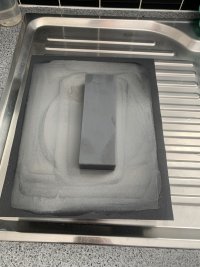Lately I've been reading up on Arkansas stones, and I think it is just a matter of time before I find one that I need to flatten, and I don't want to kill my Atoma.
Looking for hints, tips and recommendations for using SIC powder.
Grit? Surface materials? How much?
How do you guys do it?
Looking for hints, tips and recommendations for using SIC powder.
Grit? Surface materials? How much?
How do you guys do it?




